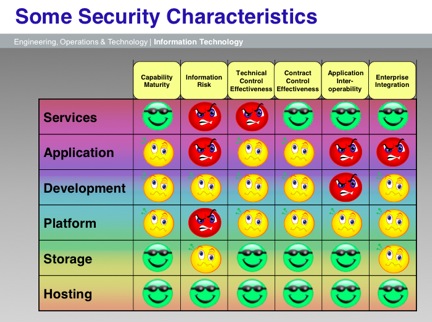It wasn't all that long ago that Boeing didn't even have an IT department, let alone any processes in place to make use of the massive amount of data it collected to improve its aircraft manufacturing efforts. But today's aircraft couldn't be manufactured without a significant amount of BI and data management. Boeing today moves 60 petabytes around its network, and the company is in the middle of several Big Data pilot projects as well. Let's see what they’ve been cooking up. Boeing manufactures a new 737 aircraft every day, with plans on increasing that number to 42 a month within the next three years. The next generation 737 is now available as a virtual walk-through, enabling potential airline customers to examine all different parts of the plane, from the landing gear to the cabin details, without having to leave their office. Boeing relied on Microsoft's Azure to host the model, created from more than 20,000 high-resolution images. Boeing went with that cloud-based option not only to avoid the costs of maintaining a separate collection of on-premises servers, but also because the company experiences widely varying levels of demand for viewing the plane, depending on trade show schedules and other events. Boeing relied on another cloud service from Skytap.com to build a Web site for a client within the UK Ministry of Defense. The site, called Logistics Network Enabled Capability, hosts enormous amounts of defense-related logistics and supply chain data. As Paul Desmond writes in NTTCOM.tv, "The biggest stumbling block was getting approval from the security team." Once that approval was granted, the company set up 200 virtual servers in a single weekend. At a presentation during the Gartner Catalyst conference last month in San Diego, I got to hear from two Boeing data architects, Stephen Whitlock and Aradhna Chetal, about several newer cloud-based efforts. "Clouds are a good place to start with low risk data," said Whitlock. One such project was Boeing's internal ecommerce site, a company store that sells 1,000 or so items. They put the business logic and credit card processing code into the cloud, along with tracking inventory and keeping compliance with PCI standards. The app has worked out well; the following block diagram shows how it was built:

One of the problems with evaluating cloud providers is that many of them wouldn't let Boeing examine their data centers to the level of detail that Boeing wanted, or gave inadequate responses to their request for proposals. "For example, would our prospective cloud system administrators tell us the nature of their own two-factor authentication?" said Chetal. One of the projects underway focuses on maintenance planning for airline customers. It requires capturing those customers’ actual experience with replacing failed parts and scheduled maintenance. "We tried to see if we could code complex business logic and workflows in a new maintenance planning program," Whitlock said. The amount of data involved was tremendous, including keeping track parts, servicing records, and planes’ every hour of flight time. "We found that the cloud-based platforms were more than capable of handling these very complex processes. We were able to do rapid prototyping and code some very successful proofs of concept," he added. The goal: to make updated plane data available to various stakeholders whenever they need it.
Lessons learned
Boeing has taken some key lessons from these cloud and BI projects: First, different vendors have different stacks and services. Not everyone has everything, and you need to spend some time investigating the specifics. "We can't generalize or give blanket approval for every cloud,” Whitlock said, “We have to evaluate each case on its own. Most of our use cases have unique requirements, compliance needs and particular kinds of data protection.” For example, the maintenance planning system had to be available 24x7, with very low network latency from around the world, in order to serve its airline customers. Boeing also had to isolate each airline's data so that customers could only see their own information. The cloud is more about mindset and perception. Management gave the cloud a green light when it perceived a satisfactory level of security controls and other data integrity issues. "We found that we were better off if we could communicate the risks properly to information stakeholders and other project owners," said Whitlock. Have consistent IT controls for evaluating each cloud vendor, including standardized deliverables and touch points between your own IT organization and your cloud providers. The infographic below, which Whitlock shared at the conference, illustrates the level of analysis involved in evaluating each cloud vendor for storage, platform and hosting services:

Finally, if you are concerned about security, then host your apps in the cloud but keep your data on premises. Just make sure that you have consistent controls for these apps. Image: travellight/Shutterstock.com
